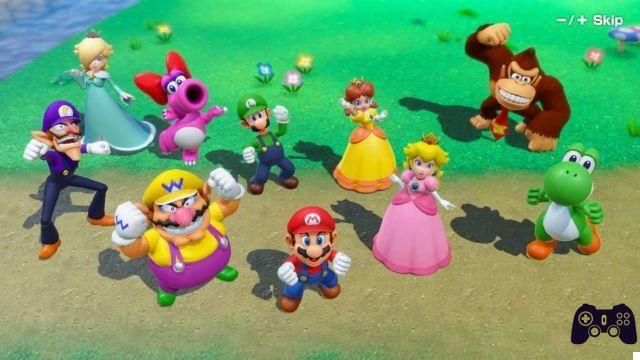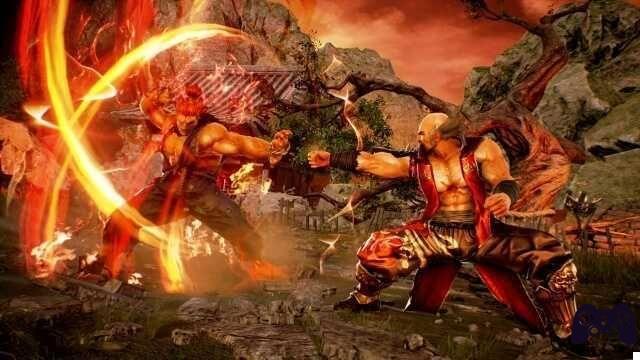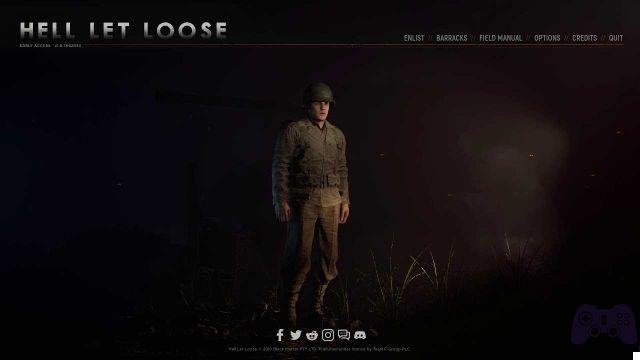Welcome back to the tenth installment of our in-depth guide to Super Smash Bros. Ultimate's stellar cast of playable characters
In this ours guide, we will devote ourselves to the many characters playable of Super Smash Bros. Ultimate, starting with Mario up to the latest additions of the second Fighters Pass. In each episode we will describe about five or six fighters, however, dividing them according to the chapter of Smash in which they made their debut. Today our journey into the rookies of the fourth Smash continues, and at the end of today's episode we will be halfway there. Today we will see greninja, the Mii wrestlers, the Spadaccini Mii, the Mii Riflemen e Palutena. In the appendix, we will explore the concept of customizable attacks.
Quick Preamble
Before moving on to the characters, let's clarify the fulcrum of the guide: in Super Smash Bros. Ultimate the task of each player is to throw opponents off the screen, fighting in arenas that mix the genre of fighting with elements of platformer (X and Y allow you to jump). The A and B keys, used in combination with the various directions, give life to the most disparate moves, as well as the back keys to manage shields, dodges and holds. The game also implements tools that irremediably alter the fate of each encounter, but in this guide we will basically focus only and only on the characters themselves. Increasing the opponent's damage will make him lighter and, therefore, vulnerable.
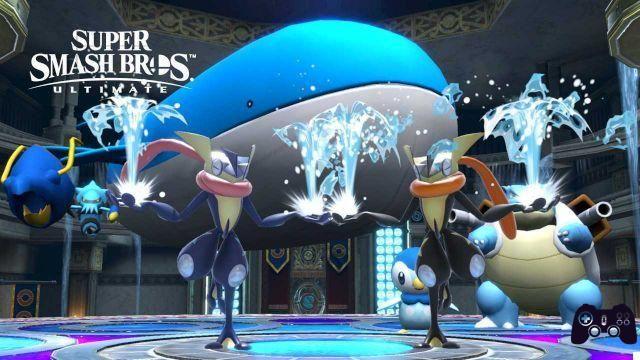
Greninja - Super Smash Bros. Ultimate Character Guide
With a trailer also aimed at confirming Charizard's solo debut, the water (and dark) starter Pokémon also enters the ring with the fourth Smash (after pretending to be Mewtwo in the shadows, because Masahiro Sakurai loves to tease us). Since, greninja boasted a learning curve similar to Snake's: using it is easy, mastering it a little less.
- Franchise of origin: Pokémon
- Origins: Greninja made its debut in Pokémon X and Y in 2013. This is the final evolution of Froakie, the water-type starter, after the intermediate stage Frogadians. The anime has made one of its flagship mascots out of it, to the point of giving it a kind of special Mega Evolution. The resulting "Greninja form Ash" reached the main series in the next generation. Although the games of GAME FREAK have never particularly taken into account the adaptation, Smash as we all know loves the anime. Ultimate included the new form in Greninja's Final Smash. During the development of Super Smash Bros. 4, Sakurai had to rely on Ken Sugimori's artwork alone for a long time, as X and Y were still in development themselves.
- Gameplay: With Aqualame (B) Greninja charges and throws one of her water shurikens. The charge only needs to hold B, as releasing it fires the blow: the more charged it is, the more blows it inflicts and the less its range (as well as its speed) will be. Sneaky shadow (↔ + B) casts Greninja's shadow forward by holding B; when the button is released, the attack starts. Hydropump (↑ + B) does not deal damage (unlike the Pokémon series), but it is directionable (just like Lucario's Extreme Speed). Substitute (↓ + B), also in contrast to the Pokémon games, is a counterattack.
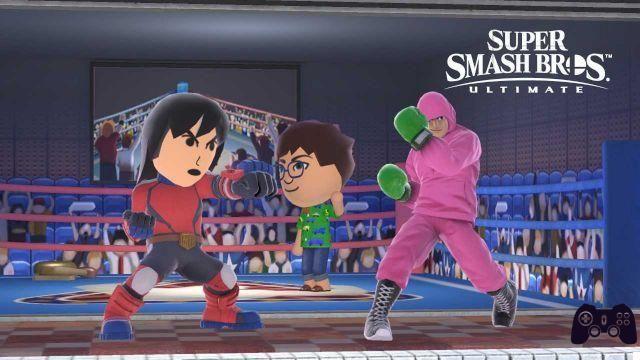
Mii Fighter - Super Smash Bros. Ultimate Character Guide
After Sakurai barred Miis from characters in Brawl, with the arrival in our Super Smash Bros. 4 rookie guide it's time to describe the Mii Warriors. The funny avatars seen on Wii, Wii U, Nintendo 3DS and the Nintendo Switch itself also make their debut in Smash, with the explicit intention of allowing the player to really insert anyone into the game. It is up to us to decide whether to recreate ourselves, our family, an actor or a character from other titles. Let's start with Mii wrestlers, who fight hand to hand.
- Franchise of origin: allegedly, Wii Sports; at the logo level, Super Smash Bros. itself
- Origins: The idea behind Miis in general has been around for a while; Shigeru Miyamoto wanted avatars since the days of the NES. Wii's universal appeal allowed the game designer to see his creature come to light in late 2006. However, Masahiro Sakurai said during his presentation of the Mii Warriors for the fourth Smash that “in [Brawl's] time, it didn't seem natural to see Miis punching and kicking. " Sakurai feared that the "innocent charm" of the Mii was somehow lost.
- Gameplay: Mii Warriors - all of them - boast moves that can be set at will, so we will have to go fast as we did with the Pokémon Trainer. The standard special attack (B) can be Metallic Strike (an iron ball thrown forward), Supersonic punch (a flurry of punches) or Explosive side kick (a loaded shot, similar to the Falcon Punch). The side special move (↔ + B) can be Turbocalcium (a jerk forward with a flurry of blows), Fiery football (a forward momentum) or the Suplex (one click, followed by a grip and a suplex). The top special attack (↑ + B) can be Deadly split (a high kick followed by a swoop), Kick helicopter (a volley of high kicks) or penetrating amount (same thing, but with fists). The bottom special move (↓ + B) can be Torpedo warhead (a swoop attack), Flying fake (a stunt similar to that of Sheik and Samus Zero Suit) or Control (a counterattack).
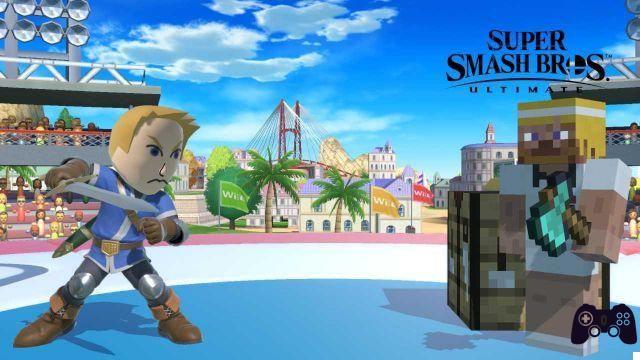
Mii Swordsman - Super Smash Bros. Ultimate Character Guide
As you can see, the Mii Warriors are divided into three classes. This breakdown serves to provide three types of gameplay - as well as archetypes for characters in general - aimed at covering as many fighting styles as possible. Alternatively, seeing Miis as enemies, the “Mii Squad” seen in the Multi Melee mode (“Games & More” menu) replaces the hordes seen in past games, such as the Fighting Polygon Team, Fighting Wire Frames and Zaamar. Now we will talk about the Spadaccini Mii.
- Franchise of origin: allegedly, Wii Sports; at the logo level, Super Smash Bros. itself
- Origins: We mentioned the consoles that Miis appeared on, but we should have included the original Nintendo DS as well. What we know about 3DS like Tomodachi Life, in fact, it is the sequel to a game already seen on DS, which implemented Miis despite the fact that the console itself did not have a menu to create them.
- Gameplay: The Swordsman Mii boasts twelve special moves that can be combined at will. The standard special move (B) can be Swirling lunge (a small tornado used as a bullet), Shining star (a small shuriken of light to be thrown quickly) or Discharge of slashing (a flurry of close range shots). Side special attack (↔ + B) can be Attack from the sky (an aerial somersault in the direction of the opponent), Impetuous shot (a loadable momentum, like Ike's) e Chakram (a metal ring to be thrown, the range of which depends on the input). Upward special move (↑ + B) can be Back in the rock (an upward swipe followed by a swoop), Flying slashes (a volley of upward blows) e Heroic spin (the rotating attack of Link, Link Child and Link Cardboard). The downward special attack (↓ + B) can be Counterattack (self-explanatory), Reflective rotation (a bullet reflector like that of Fox, Falco and Wolf), e Strong lunge (a powerful forward stocking).
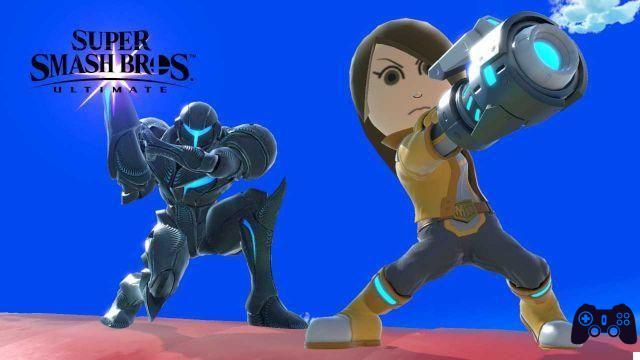
Mii Rifleman - Super Smash Bros. Ultimate Character Guide
As a loophole for adding characters to the game beyond the ones we will see in the guide, Super Smash Bros. Ultimate has included many morals with which to customize all Mii Warriors, including cosmetic items sold separately when each DLC character arrives. The Rifles Thousands, the last class we'll see today, is particularly prone to treatment, which so far has included Cuphead, Sans from Undertale, and Geno from Super Mario RPG, to name just three.
- Franchise of origin: allegedly, Wii Sports; at the logo level, Super Smash Bros. itself
- Origins: Despite the many curiosities about Mii with which we filled the "Origins" entry for these fighters, we must close with a touch of bitterness: in the era of Nintendo Switch, the "human balloons" have almost fallen into disused more total. Their creation is no longer even necessary when setting up the Grande N hybrid console. Nonetheless, there are still a few (few) games that make use of them, and Super Smash Bros. Ultimate is one of them.
- Gameplay: The Mii Rifleman boasts twelve special moves that can be combined at will. The standard special attack (B) can be Shot of energy (Samus' bullet), Laser shot (Falco's Blaster) or the Launchers (fires a grenade with an arc trajectory, medium range). The side special move (↔ + B) can be Column of fire (Lucas's PsicoFuoco), la Bomba stealth (a hard-to-see bullet whose range depends on the duration of B's pressure, which explodes upon release) and the Missile (Samus missile). Upward special attack (↑ + B) can be Lunar launch (jump up with a small explosion at the starting point), Rocket flying kick (an upward kick) or Take off! (a non-offensive use of the arm-gun as a propeller; directionable). The down special move (↓ + B) can be Reflector (Fox and Wolf spotlight), Throwing bomb (drops a mine on the ground) o Defensive vortex (Ness's MagnetePSI).
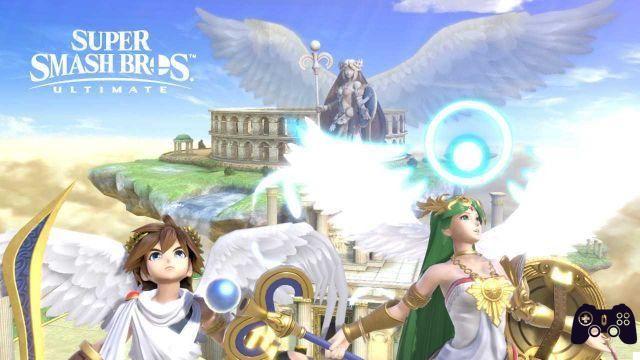
Palutena - Super Smash Bros. Ultimate Character Guide
Today's marathon ends with a character who in the fourth Smash made intense use of the then newborn mechanic of customizable moves. After being Pit's very first Final Smash, Palutena took the field with a trailer halfway between the anime style of promotional shorts for Kid Icarus Uprising and a gameplay full of customizable and very different special moves. In Ultimate, the choice between twelve different special attacks is back to being exclusive to Miis (with all due respect to you readers), but that doesn't mean that Smash's second goddess should be taken lightly. Far from it!
- Franchise of origin: Kid Icarus
- Origins: Palutena, or a reference to Athena, is the goddess of light who appointed Pit as her personal bodyguard. His rivalry with the goddess of darkness Medusa stems from the latter's hatred of humans, for which Palutena turned her into a monster and banished her to the underworld. Medusa therefore attacks the Celestial Kingdom (scenario in which the original design of Palutena appears as a statue), leading Palutena to call Pit to his aid. In Kid Icarus: Of Myths and Monsters for Game Boy, Palutena again summons her champion to prevent another monster invasion. The goddess never saw herself again until Super Smash Bros. Brawl, where she also received a redesign under Pit's Final Smash, as well as an appearance in the adventure mode The Subspace Emissary. In Kid Icarus Uprising, released between Brawl and the fourth Smash, Palutena boasts a new personality, more cynical and sarcastic but - between a dig at Pit and another - always devoted to good.
- Gameplay: Palutena often and willingly draws on her most recent incarnation - Uprising - for her moves. Automirino (B) automatically hits the nearest enemy, without needing to aim. The move boasts a medium to long range. Explosion (↔ + B) acts with a more limited range, but the deflagration occurs without aiming: not even the one who launches the move has a way of predicting exactly how far he will hit (you get there with experience). Teleport (↑ + B) is identical to Mewtwo's attack of the same name, but boasts greater range. Counterattack/Reflected mirror (↓ + B) repels all physical attacks, but also functions as a reflector against ranged attacks.
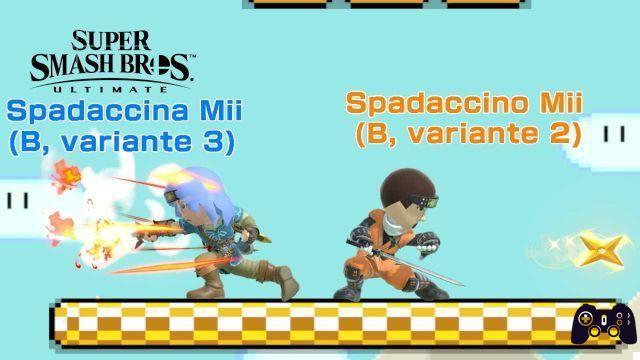
Concluding details, tenth episode: customizable attacks for Mii Warriors
It is up to you to decide whether to use the Mii Warriors or whether to limit yourself to the other characters, but in this part of the guide we would like to give you some additional tips on the customizable fighters of Super Smash Bros. Ultimate. The move list will auto-correct itself based on the special moves set by whoever paused the game. This, of course, if the player has set up a Mii Warrior with moves other than their primary choice. If you get carried away and create a lot of Miis, a reminder can only do you good. Remember they are only special attacks (B / B + ↔ / ↑ / ↓) to have variants to set.
All attacks with the A key, therefore, are always the same based on the class chosen for a character. All in all, Mii Fighters, Mii Swordsmen, and Mii Fusiliers boast enough options from to adapt to any person or character you want to include in the Smash roster, so it's up to you to decide which attacks are best suited to the character you are going to create, their personality or, why not, your play style. There are, however, attacks that are clearly more or less useful than others, albeit surprise the opponent with less predictable attacks is a legitimate strategy. It will look like we are washing our hands of it, but we really encourage you to experience!
That's all for today: how are you finding yourselves so far? (You can find the summary here.) Please let us know by leaving us a comment below, and don't forget to stay on Holygamerz to not miss any news from the videogame world and beyond.




